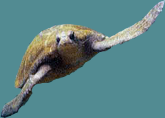Important Historical Dates
- 1807-Patrick Watkins (Irish) was the first inhabitant on the island Floreana.
- 1832-Ecuador claims the Galapagos Islands
- 1835-Darwin stops by on the Beagle to conduct scientific research.
- 1869-J. Cabos started "El Progreso" marketing cattle, oil, and sugar. However, Cabos led with a dictatorship and was murdered by his workers
- 1936-Galapagos declared a National Reserve
- 1942-United States uses Galapagos as strategic positioning in WWII.
- 1954-Growing concern over extinction of tortoises
- 1959-Ecuador declares 95% of the Galapagos as a National Park
- 1964-Charles Darwin Foundation and Research Center opens
- 1968-National Park Service established from the Forest Service of the Ministry of Agriculture.
- 1978-UNESCO declares Galapagos a Natural Heritage Site
- 1992-Management Plan for the Galapagos Marine Reserve. This was ignored and poorly organized. It would later be fixed in 1998.
- 1995-Almost placed on the "Danger List" for UNESCO
- 1997-8-El Nino: warm water caused fish to leave, which took away the food source for birds and seals. Many young fur seals died off.
- Nov 15, 1997- deadline for clear progress. This prompted the attention of the Ecuadorian government and led them to create a Ministry of the Environment. Mrs. Flor de Maria Valverde (a biologist committed to studying the Galapagos) was appointed as minister. Valverde started a special commission to draft the Special Law for the Galapagos, led by Dr. Gunther Reck (conservationist, fisheries biologist, former director of the Charles Darwin Station). Up to April 1997, President Rivera allowed the Ecuadorian government to run the islands until the new law is enacted. Special Law is implemented protecting National Park (97% land area on islands) and Marine Reserve (40 nautical miles out), reduce population of goats and wild pigs -preserve ecological systems and biodiversity, sustainable and controlled development, native community involvement, integrated management between the land and marine areas, improve quality of life of residents, extra caution in regard for the environment during large events
- 1998-Interpretation Center opens on San Cristobal- similar to a historical museum showing how humans effect nature.
- 1998-Ecuadorian National Congress and Ecuadorian President Fabian Alarcon passed the Galapagos Conservation Law. There was strong opposition by industrial fishermen.
- Dec 2002- Ecuadorian President signed a new law "Regulation for the Total Control Plan for Invasive Species"


